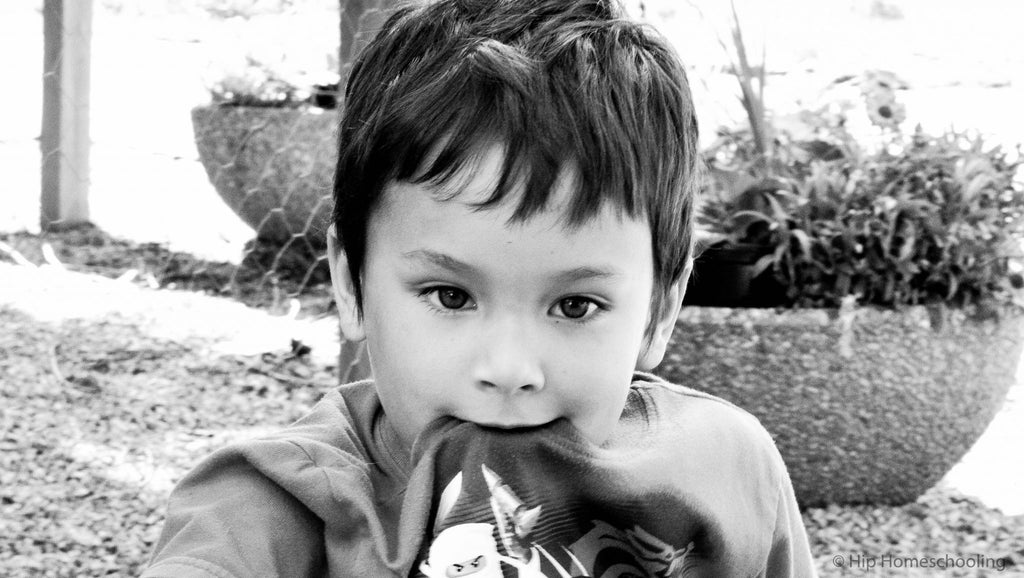Do you find yourself constantly telling your toddler to stop chewing on his/her sleeve? To get his/her fingers or toys out of their mouths? Let’s begin with some reasonable suggestions as to how to help your child. The ability to eliminate sleeve chewing in the short term is unlikely. Your child needs to chew, so we aren’t going to entirely stop the behavior--but rather replace it with positive modalities!
Are you continuously having to replace shirts due to destroyed, chewed-up sleeves? If so, here are some important considerations.
Why is my child chewing on clothes?
- Does your child need more proprioceptive input?
- Is he/she seeking greater oral motor input?
- Does your child fidget as a result of this manifestation?
It is important to observe if there is a chewing pattern (time of day, at school vs. at home, Is he/she anxious? Stressed?). If your child is chewing because of the reasons above, here are some healthy alternatives to decrease sleeve chewing:
Proprioceptive input: There is a strong possibility your child is seeking greater proprioceptive input. Increasing physical activity and proprioceptive input can help to release energy as well as regulate and decrease the desire to chew. Here are some simple activities you can do (ideally prior to when you see the chewing otherwise when the chewing begins). Heavy work that provides childrens’ joints and muscles input can be extremely fulfilling. Implementing a Sensory Diet is a wonderful way to provide an opportunity to obtain appropriate input (See my blog on Sensory Diets). A few proprioceptive activities include: obstacle course, crawling, climbing, jumping, swimming, animal walks, pushing/pulling with both hands, or even clapping. Linear input, such as swinging, is calming and organizing. Facial massage is another wonderful way to provide our little chewers with jaw input that is calming and organizing.
Oral motor: Your toddler may be chewing on clothing sleeves as a result of his/her seeking greater oral motor input. Oral input is known to provide focus and calming-thus decreasing potential anxiety. One option I love for getting this type of input with little ones is using a chewing necklace or a vibrating toothbrush. The recommendation by your OT to use a Z-Vibe can provide organizing input through vibrations. Sensory chew toys are offered in abundance online and tend to be highly appealing to children. I recommend the caregiver wearing one as well. When the caregiver anticipates sleeve chewing he/she can begin to chew their chew toy. If the child sees this, he/she will most likely mimic the behavior and reach for his/her chew toy (as opposed to his/her sleeve). Other beneficial oral motor activities include: bubbles, straws (sucking and blowing) as well as crunchy foods which provide resistance including: carrots, pretzels, apples and peanut butter. PERIODICALLY using chewing gum (which is sugar free) has been shown to improve mood, sleep and regulation of the sensory system.
Fidget: Fidgeting is extremely common, especially among children, and even more so amongst those who seek greater input. Healthy, safe fidgets can aid in diminishing a child's desire to chew on his/her sleeves.There are endless fidget options some of which include: sensory chew necklaces or bracelets, whistles, koosh balls, spinners and fidget cubes. Select the fidget(s) that your child prefers and simultaneously reduces the chewing behavior.
Anxiety/nerves-Chewing has been known to have a calming effect especially if a child is anxious or nervous. Does your child appear to be overloaded with incoming sensory input? The act of chewing helps decrease stress and helps increase focus. One option (as mentioned above) is to use sensory chew toys. However this will not stop the act of chewing due to anxiety. The ideal outcome for this chewing is to determine the root of the anxiety and consequently to address it. Ways of decreasing anxiety varies amongst children depending on the severity of the condition. Deep breathing exercises and physical activity have been visibly beneficial to reduce anxiety levels, as do breathing exercises and guided meditation. Blowing bubbles can provide deeper breaths and produce moments of stress reduction, and tends to be enjoyable for many toddlers.

‘Quiet Time’ with limited environmental stimuli can not be stressed enough for these children who ‘chew’ for a variety of reasons. If you are at all concerned with your child's behaviors, please consult with a professional Occupational Therapist and/or Speech Therapist.




Leave a comment: